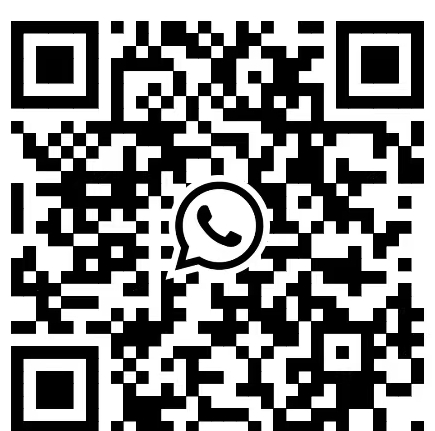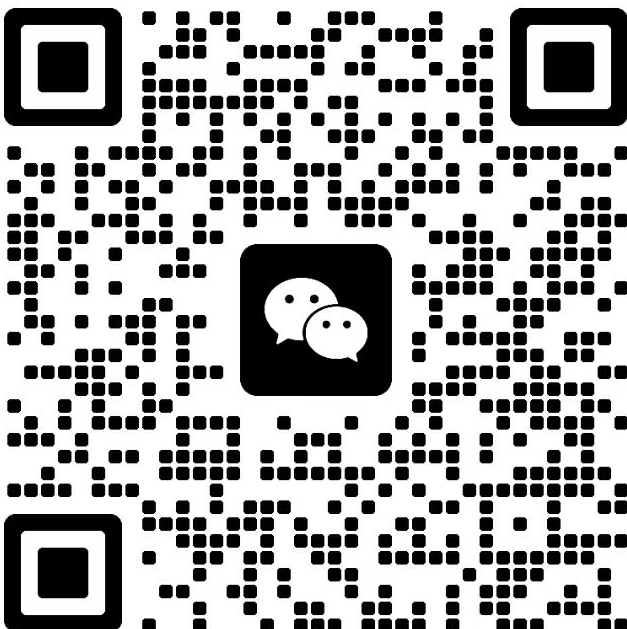wiring methods and precautions for ABB frequency converters
The following are the wiring methods and precautions for ABB frequency converters (taking general-purpose models as examples, such as ACS580 and ACS355 series), covering the main circuit, control circuit, and safety specifications, which are applicable to most industrial scenarios:
I. Main Circuit Wiring (High Voltage Part)ABB-MCCB-XT2S160-TMD25-FF-3P
1. Power Input (R/L1, S/L2, T/L3)
- **Connection Object**: Three-phase alternating current (except for single-phase input models, for example, for single-phase 220V input, it corresponds to the L1/L2 terminals).
- **Wiring Requirements*ABB-MCCB-XT1S160-TMD25-FF-3P*:
- It should be connected through a molded case circuit breaker (MCB) or an air switch to provide overcurrent protection (the rated current of the circuit breaker is 1.5-2 times the rated current of the frequency converter).
- An AC reactor (to reduce harmonics) or an EMC filter (to suppress electromagnetic interference) is recommended to be installed on the input side.
- **Attention*ABB-MCB-SH201-D20*:
- It is strictly prohibited to connect the power supply to the output terminals (U/T1, V/T2, W/T3), otherwise the frequency converter will be directly damaged!
- The input voltage must be consistent with the label on the frequency converter nameplate (such as 380V/50Hz or 220V/60Hz).ABB-S3N250 Circuit Breaker*
2. Motor Output (U/T1, V/T2, W/T3)
- **Connection Object**: Three-phase motor (a dedicated frequency converter is required for single-phase motors, here taking three-phase motors as an example).
- **Wiring Requirements*ABB Molded Case Circuit Breaker T2N160TMD630FF3P*:
- A shielded twisted pair cable should be selected for the motor cable, and the shielding layer should be grounded at one end (connected to the grounding terminal of the frequency converter) to reduce electromagnetic interference.
- For long-distance cables (>50m), an output reactor or filter should be installed to avoid damage to the motor insulation.
- **Attention**:
- It is prohibited to connect capacitors or surge absorbers to the output terminal, which may cause overcurrent faults in the frequency converter.
- Confirm that the rated parameters of the motor (voltage, current, power, speed) match those of the frequency converter, and set them correctly in the parameters (such as P0304 for the rated voltage of the motor and P0305 for the rated current of the motor).
3. Other Main Circuit Terminals
- **Brake Resistor (BRK+, BRK-)**:
- If quick braking is required, connect an external brake resistor (only suitable for frequency converters with a braking function), and pay attention that the power and resistance value of the resistor should meet the requirements of the frequency converter manual.
- **DC Reactor (+, -)**:
- It is used to improve the power factor and is connected to the DC bus terminals (only supported by some models).
- **Grounding Terminal (PE/Grounding Symbol)**:
- It must be reliably grounded (an independent grounding wire with a cross-sectional area of ≥4mm²), and the grounding resistance is <10Ω to ensure safety and anti-interference.
II. Control Circuit Wiring (Low Voltage Part)
The control circuit terminals are usually located on the front or side of the frequency converter and are divided into **Digital Input (DI), Analog Input (AI), Digital Output (Relay/Transistor), Analog Output (AO)**, etc. The following are typical wiring examples:
1. Digital Input (DI, Start/Stop, Forward/Reverse, Multi-speed, etc.)
- **Terminal Definition** (Taking ACS580 as an example, DI1-DI6 are general digital inputs):
- Common Terminal: COM (the negative pole of the 24V DC power supply, or the negative pole of an external power supply).
- Signal Terminal: For example, DI1 is set as "Start", DI2 is set as "Stop", and DI3/DI4 are set as "Multi-speed Selection".
- **Wiring Method**:
- Passive Switch Quantity: One end of the switch is connected to the DI terminal, and the other end is connected to COM (the internal 24V power supply is provided).
- Active Signal: The positive pole of an external power supply (such as 24V) is connected to the DI terminal, and the negative pole is connected to the external COM (it is necessary to ensure voltage matching to avoid damaging the terminals).
- **Parameter Setting**:
- Define the terminal function through function codes. For example:
- P0701 (DI1 function) = 1 (Start), P0702 (DI2 function) = 2 (Stop), P0703 = 3 (Forward/Reverse Switching).
2. Analog Input (AI, Frequency Setting, Torque Given, etc.)
- **Terminal Definition** (AI1, AI2, supporting 0-10V or 4-20mA):
- Voltage Signal: The positive pole is connected to AIx, and the negative pole is connected to AGND (analog ground).
- Current Signal: The positive pole is connected to AIx, and the negative pole is connected to IAGND (current signal ground, in some models, AIx and I+ need to be short-circuited).
- **Wiring Requirements**:
- Use a shielded twisted pair cable and keep it away from power cables to avoid interference.
- The input signal needs to match the parameters. For example, P0756 (AI1 signal type) = 0 (voltage 0-10V) or 2 (current 4-20mA).
3. Relay Output (RO, Fault Alarm, Operation Status)
- **Terminal Definition** (RO1, RO2, usually changeover contacts: NO/NC/C):
- Connect to a PLC, indicator light, or alarm system. For example:
- The NO contact is connected to the "In Operation" indicator light, and the NC contact is connected to the "Fault Alarm" relay.
- **Attention**:
- For AC loads, an RC absorption circuit should be connected in parallel, and for DC loads, a freewheeling diode should be connected in parallel to protect the contacts.
4. Analog Output (AO, Frequency, Current Monitoring)
- **Terminal Definition** (AO1, AO2, output 0-10V or 4-20mA):
- Connect to an instrument or the analog input module of a PLC. The positive pole is connected to AOx, and the negative pole is connected to AGND (shared ground with the input side).
- **Parameter Setting**:
- Define the output content. For example, P0771 (AO1 output) = 2 (output motor current), P0772 = 1 (output frequency).
III. Typical Wiring Example (Start/Stop + Analog Speed Regulation)
| Function | Frequency Converter Terminal | External Connection | Explanation |
| Power Input | R/L1, S/L2, T/L3 | Three-phase circuit breaker (380V/50Hz) | The circuit breaker should have leakage protection |
| Motor Output | U/T1, V/T2, W/T3 | Three-phase motor (U/V/W) | The shielding layer of the cable is connected to the PE terminal of the frequency converter |
| Start Signal | DI1 | Normally open contact of the button → COM (internal 24V) | Press the button, DI1 = 1 (Start) |
| Stop Signal | DI2 | Normally closed contact of the button → COM (internal 24V) | Release the button, DI2 = 0 (Stop) |
| Frequency Setting (0-10V) | AI1 | The center tap of the potentiometer → AI1, both ends → 10V/AGND | Adjust the frequency with the potentiometer (0-50Hz corresponds to 0-10V) |
| Fault Alarm | RO1 (NO) | Alarm indicator light → 24V power supply | When the frequency converter fails, the contact closes and the light is on |
| Grounding | PE | Independent grounding copper busbar (cross-sectional area ≥4mm²) | Ensure that the grounding resistance is <10Ω |
IV. Safety and Precautions
1. **Power-off Operation**:
Disconnect the power supply before wiring, and wait until the LED of the frequency converter is completely off (discharge the DC bus capacitor, about 5-10 minutes) to avoid electric shock.
2. **Wire Specification**:
- Main Circuit: Select the wire according to the current (for example, if the rated current of the frequency converter is 50A, select a 10mm² copper wire).
- Control Circuit: The cross-sectional area of the signal wire is 0.5-1.5mm², and the analog signal requires a shielded wire.
3. **Anti-interference Measures**:
- Lay the power wire and the signal wire separately (with a spacing of >30cm) and avoid parallel routing.
- It is prohibited to directly connect the COM and PE of the control terminals to prevent ground loop interference.
4. **Parameter Initialization**:
After wiring and powering on, first restore the factory settings (such as P0970 = 1 for ACS580), and then set the parameters according to the motor parameters (P0300-P0310) and control requirements (such as P1000 = 2 for selecting analog input).
5. **Trial Operation Inspection**:
- First, conduct a no-load trial operation to confirm that the motor rotation direction is correct (test through the forward/reverse signal).
- Monitor the current and temperature after loading to ensure the normal operation of the frequency converter and the motor.
V. Differences Among Different Series (Taking Common Models as Examples)
- **ACS355 (Compact Type)**:
The control terminals are integrated below the panel, and the number of DI/AI terminals is small, which is suitable for simple start/stop + analog speed regulation scenarios.
- **ACS580 (General Purpose Type)**:
It supports more extended terminals (such as PROFINET, Modbus communication), and can be connected to a PLC or a touch screen, which is suitable for complex control.
- **ACS880 (High Performance Type)**:
It adds an encoder interface (for vector control) and more relay outputs, and the wiring needs to be done according to high-precision control requirements.
VI. Fault Troubleshooting (Common Wiring Problems)
- **The Frequency Converter Does Not Start**:
Check whether the DI terminal is correctly connected to COM, and whether the parameter P0700 (Command Source Selection) is set to "Terminal Control" (such as P0700 = 2).
- **The Frequency Cannot Be Adjusted**:
Confirm that the AI signal type is consistent with the parameters (P0756), and check whether there is voltage/current in the analog input (measure between AI1 and AGND with a multimeter).
- **The Motor Shakes or Makes Abnormal Noises**:
Check whether the wiring of the output terminals is loose, and whether the motor parameters (such as the number of poles, rated speed) are correctly set (P0310).
Summary
When wiring ABB frequency converters, it is necessary to strictly distinguish between the main circuit and the control circuit, ensure the correct input and output, and reliable grounding, and configure the terminal functions and parameters according to the control requirements. It is recommended to give priority to referring to the frequency converter manual (models such as ACSxxx-04x-xxx-4 can be downloaded from the ABB official website), operate according to the terminal diagram and parameter table of the specific model to avoid equipment damage caused by incorrect wiring.


